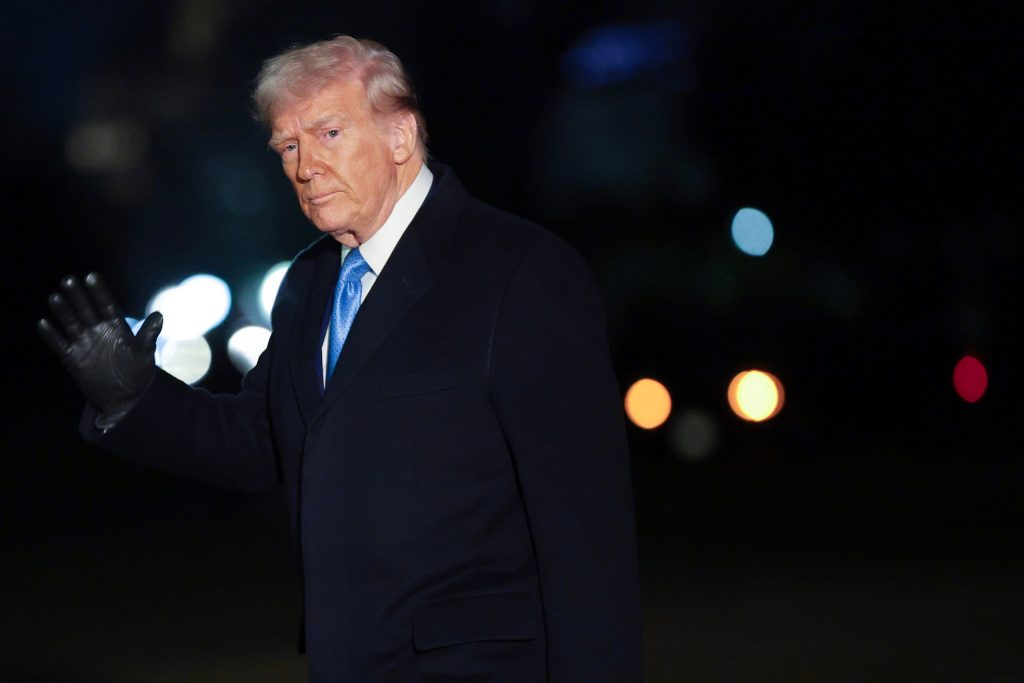President Donald Trump shared his openness to multiple budget bills to fund his policy plans. Initially, Trump backed a single-bill strategy by House Republicans but shifted his stance after Senate Republicans proposed two bills. This new strategy serves as a backup in case the House doesn’t pass its version.
The House will soon vote on its budget plan. Both the Senate and House Republicans, who hold slim majorities, aim to authorize nearly $5 trillion in new spending. This spending targets big campaign promises like the border wall and extending the 2017 tax cuts.
On February 21, Trump expressed that he didn’t mind how many bills were needed to secure funding. He’s more concerned about reaching the same end goal. “You could do three. You could do 10. As long as we get along … as long as we get them all added up, and it’s the same thing,” Trump stated on The Brian Kilmeade Show on Fox News Radio.
Senate Republicans propose two reconciliation bills. The first would fund border security and military spending, and the second focuses on tax cut extensions and raising the debt limit. The cost, potentially up to $4.5 trillion, is causing debates, especially over Medicaid cuts.
Some Senate Republicans oppose reducing Medicaid funding, a program aiding low-income Americans. Meanwhile, the House Republicans prefer a single reconciliation bill. This approach is due to differences among members, especially fiscal conservatives demanding spending cuts.
House Speaker Mike Johnson, a Republican from Louisiana, believes only one bill can realistically pass. This is because consensus within the party is fragile. Trump’s initial support for the House plan has the Senate ready with their two-bill strategy as a backup.
The House Republicans hold a slim majority, so losing just two members’ votes could sink their plan. Meanwhile, Democrats are unified in opposition. Trump praised the Senate for passing their initial budget blueprint, seeing it as a “very good signal.”
All Senate Republicans except Sen. Rand Paul voted for the measure, with every Democrat against it. Trump noted the “great unity” among Republicans. The plan now rests on whether the House can push its version through, considering its narrow majority.
Fox News and the New York Post have reported on the political maneuvering within the Republican Party. The focus is on keeping Trump’s campaign promises alive while navigating internal party disagreements. The House faces challenges with its fiscal conservatives pushing back on increased spending.
Newsmax highlighted the significance of these budget talks, emphasizing the stakes involved. The outcome will impact Trump’s legacy and the Republican Party’s ability to deliver on its pledges. The situation remains fluid, with both chambers working to find common ground.
Trump’s willingness to embrace multiple bills shows his adaptability in achieving policy goals. His administration is keen on maintaining momentum for his agenda. The political dynamics are complex, with each side weighing their options carefully.
Republicans are striving to balance fiscal responsibility with ambitious spending plans. This balancing act is crucial for the party’s credibility and future electoral success. The road ahead is uncertain, yet Republicans remain focused on their objectives.
The political landscape is tense, with both opportunities and risks lurking. As negotiations continue, the Republican Party is determined to fulfill its promises to voters. The coming weeks will be pivotal in shaping the direction of Trump’s policy initiatives.
